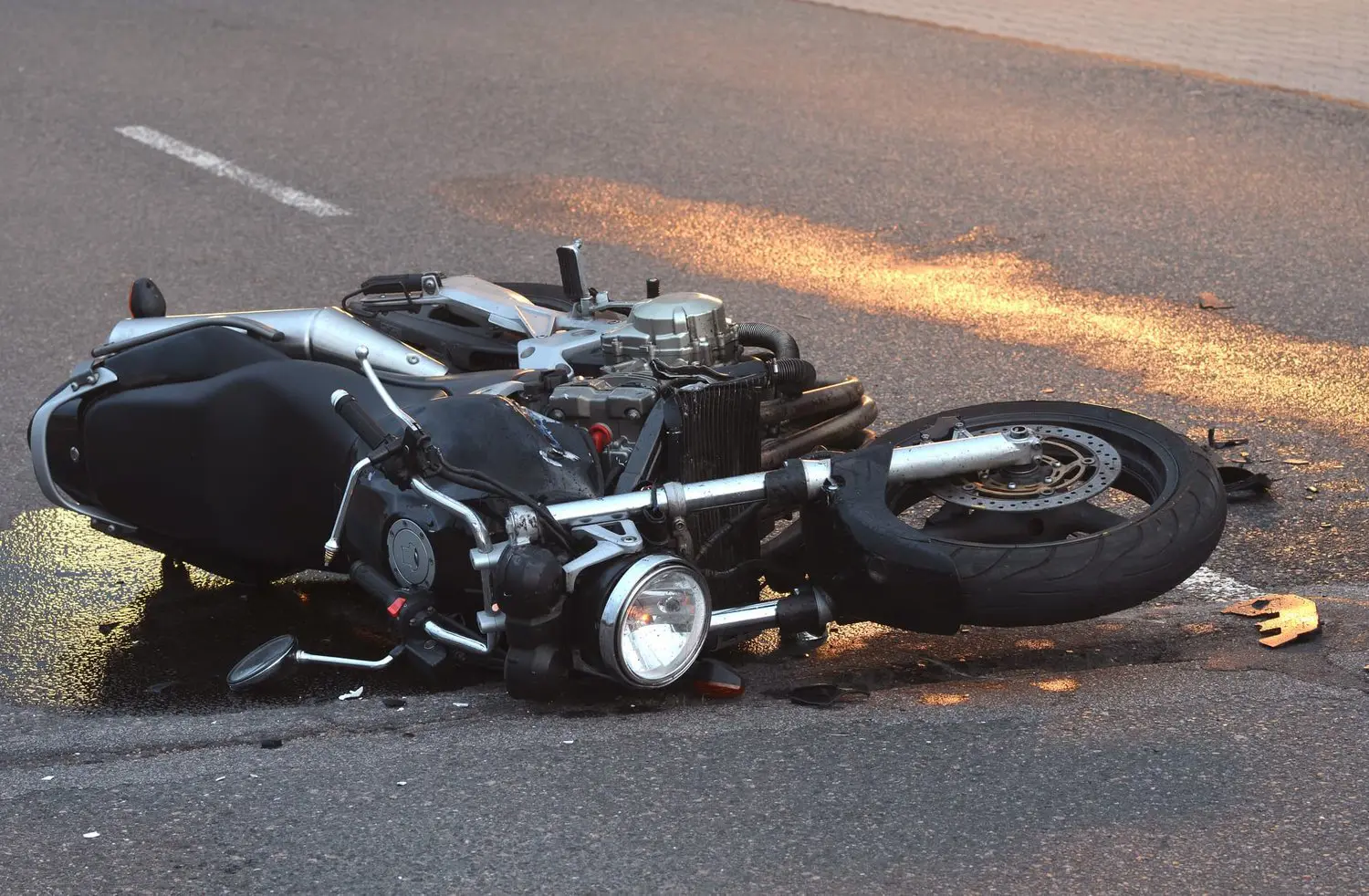Why Motorcycle Accident Claims Are a Uphill Battle
Riding a motorcycle offers a unique sense of freedom, connection to the road, and an exhilarating experience that car drivers simply don’t understand. However, this freedom comes with significant and often unseen risks, especially when it comes to the legal aftermath of an accident. If you’re a motorcyclist, you know the vulnerability you face every time you hit the asphalt.
Unlike a standard car crash, a personal injury claim stemming from a motorcycle accident is inherently complex and presents unique challenges that can make securing fair compensation an uphill battle. It’s not just about two vehicles colliding; it’s about a stark vulnerability meeting a pervasive, negative social bias. These factors, along with others, conspire to make the process of recovering damages uniquely difficult for injured riders.
At The Win Law Firm, we’ve seen firsthand how these obstacles can derail a claim for those who go it alone. We believe that understanding these specific challenges is the critical first step in building a strong, successful case. This blog will pull back the curtain on the three main hurdles injured riders face and explain how an experienced personal injury attorney is your most vital piece of protective gear.
Why is the High Severity of Rider Injuries a Major Legal Obstacle?
The first and most obvious challenge in a motorcycle accident claim is the devastating severity of the injuries sustained by the rider. Unlike occupants in a car, motorcyclists lack the fundamental protection of a steel frame, airbags, and seatbelts. This means a seemingly minor collision can lead to life-altering, catastrophic outcomes.
- Exposure equals Catastrophe: Even at lower speeds, a motorcyclist’s body is directly exposed to the road, vehicles, and debris, resulting in severe physical trauma.
- Common catastrophic injuries include:
- Traumatic Brain Injuries (TBI): Despite helmet use, the force of impact can still cause concussions or severe brain damage.
- Spinal Cord Injuries: Back and neck trauma often leads to partial or complete paralysis.
- Severe Road Rash and Burns: Skin abrasions are common but can be life-threatening if they cause dangerous infections or require extensive skin grafts.
- Complex Fractures: Broken bones are common, often requiring multiple surgeries and long-term physical therapy.
- Damages are Exponential: Because the injuries are so severe, the economic and non-economic damages in a motorcycle claim are typically much higher than in a standard auto accident.
- Economic Damages soar due to astronomical medical bills, the cost of rehabilitation and long-term care, and significant lost wages.
- Non-Economic Damages, such as pain, suffering, and loss of life enjoyment, are also substantially higher due to the permanence and life-altering nature of the injuries.
The insurance companies representing the at-fault driver know these claims are expensive, making them far more aggressive in trying to minimize or deny the payout. The stakes are simply too high for them to offer a quick, fair settlement, which immediately turns your pursuit of justice into a hard-fought legal battle.

How Does the Prevailing Anti-Motorcycle Bias Affect Claims?
The second, and perhaps most insidious, hurdle in a motorcycle accident claim is the pervasive negative stereotype, or “bias,” against riders. Insurance adjusters, police officers, and even jury members often carry preconceived notions that motorcyclists are reckless thrill-seekers who assume the risk of injury. This bias is an invisible form of defense used to unfairly shift the blame onto the injured rider.
- The Narrative of Recklessness: The common assumption is that if a motorcyclist was involved in a crash, they must have been speeding, weaving, or driving dangerously.
- This narrative often persists even when all evidence points to the other driver’s negligence (e.g., failure to check a blind spot, turning left in front of the bike).
- Insurance Company Tactics: Insurance carriers are well-versed in exploiting this bias. They will often argue:
- The motorcyclist was “invisible” or should have been more visible, a tactic to shift responsibility from their negligent client.
- The rider was speeding, even without definitive proof.
- The rider was “lane splitting” or otherwise breaking traffic laws, regardless of whether that played a role in the crash.
- Jury Perception: If your case proceeds to trial, this bias can influence a jury’s decision.
- A jury might be subconsciously inclined to believe the motorcyclist was partially at fault, applying the legal principle of Comparative Negligence.
- In a state that uses Comparative Negligence, if a jury finds you were 25% at fault, your total compensation is automatically reduced by 25%. This reduction is precisely what the insurance company aims for.
An effective personal injury law firm, like The Win Law Firm, must strategically address and dismantle this bias. We work to humanize the rider and focus the narrative squarely on the other driver’s clear negligence, using accident reconstruction experts and detailed evidence to counter baseless assumptions of recklessness.
Why is Proving Liability and Calculating Damages More Complicated?
Motorcycle accident claims are also uniquely challenged by complexities in proving who was at fault (liability) and accurately calculating the full amount of damages. These issues are intertwined and compounded by the severity of the injuries.
The Difficulty of Proving Liability
Proving liability can be more challenging because, unlike cars, motorcycles often leave behind less physical evidence of a collision.
- Lack of Vehicle Damage: A motorcycle accident often results in less physical damage to the car than a car-on-car collision, which can make it harder to visually establish the force or point of impact, especially when the insurance company argues the rider was at fault.
- Witness Reliability: Witnesses, also influenced by motorcycle bias, may offer incomplete or contradictory statements, or simply say the motorcycle “came out of nowhere,” inadvertently supporting the negligent driver’s defense.
- The Comparative Negligence Trap: Many states use a comparative negligence system. As discussed, the opposing counsel will use every tactic, including bias, to assign a percentage of fault to the motorcyclist. Even if the car driver was 90% at fault, if the rider is deemed 10% responsible, the recovery is reduced, which requires a meticulous, evidence-based defense.
The Complexity of Calculating Full Damages
The life-altering nature of motorcycle injuries necessitates a more sophisticated and forward-looking calculation of damages.
- Future Medical Expenses: Catastrophic injuries often require lifelong care, including future surgeries, in-home care, and specialized rehabilitation. This requires economic experts and medical professionals to project costs over the client’s remaining lifespan.
- Lost Earning Capacity: If a rider cannot return to their former occupation or has a diminished ability to earn a living for the rest of their life, a lawyer must calculate the Loss of Earning Capacity. This is far more involved than simply calculating lost wages for a few months of missed work.
- Non-Economic Damage Valuation: Accurately putting a dollar amount on “pain and suffering” and the “loss of enjoyment of life,” especially when a rider faces permanent disability or is unable to engage in activities they loved, like riding itself—requires an attorney experienced in presenting these deep losses to an adjuster or a jury.
Without a legal team that understands the full scope of these calculations, a rider is likely to accept a settlement that only covers initial medical bills, leaving them financially vulnerable for their long-term needs.

Conclusion: Your Most Crucial Defense is Legal Representation
Motorcycle accident claims are not merely personal injury cases; they are high-stakes legal challenges defined by catastrophic injuries, an inherent social bias, and complex damage calculations. The unique vulnerability of the rider is often mirrored by the unique vulnerability of their claim to unfair dismissal or undervaluation by insurance companies.
The key to overcoming these challenges is not simply having a lawyer, but having an attorney and an entire legal team with specific experience fighting for injured motorcyclists. The Win Law Firm knows how to:
- Counteract Bias by humanizing the rider and focusing evidence on the clear negligence of the at-fault driver.
- Conduct Comprehensive Investigations using accident reconstructionists and experts to establish irrefutable liability.
- Calculate Full and Future Damages to ensure compensation accounts for a lifetime of medical care and lost earning capacity, not just immediate expenses.
Don’t let an insurance company use unfair stereotypes or complex legal maneuvers to diminish the compensation you deserve. If you or a loved one has been seriously injured in a motorcycle accident, the time to act is now.
Protect your rights and your future by contacting The Win Law Firm today for a free, confidential consultation. Let us handle the unique legal challenges so you can focus entirely on your recovery.
Disclaimer: This blog post is for informational purposes only and does not constitute legal advice. Always consult a licensed attorney for guidance specific to your case.
Frequently Asked Questions about Motorcycle Accident Claims
How does “motorcycle bias” hurt my personal injury claim?
Motorcycle bias is a pervasive social stereotype that views motorcyclists as reckless or irresponsible, regardless of the facts of a specific crash. This bias can hurt your claim in two primary ways: first, insurance adjusters may use it to argue you were partially or entirely at fault for the accident, justifying a low settlement or denial. Second, if your case goes to trial, jury members may subconsciously be influenced by the stereotype, making them more likely to apply comparative negligence (reducing your award) or find in favor of the defendant. An experienced lawyer anticipates and strategically counters this bias with solid evidence and a persuasive narrative.
What makes calculating damages in a motorcycle accident more complicated than in a car accident?
Damages are more complicated because the injuries are typically much more severe, often resulting in catastrophic, long-term conditions like Traumatic Brain Injury or spinal cord damage. Calculating damages for a motorcycle claim requires accounting for:
- Future Medical Care: Projecting the lifetime cost of surgeries, physical therapy, medication, and in-home care.
- Loss of Earning Capacity: Determining the money you will lose over the rest of your working life because your injury prevents you from returning to your job or earning at your previous level.
- High Non-Economic Losses: The pain, suffering, and loss of life enjoyment (e.g., inability to walk, loss of a hobby) are significantly greater and require specialized legal expertise to value and present accurately.
What is comparative negligence, and how does it apply to a motorcycle accident?
Comparative negligence is a legal principle that assigns a percentage of fault to each party involved in an accident. In a personal injury case, if a jury determines you were partially at fault for the motorcycle accident (for example, 20% at fault), your total compensation award will be reduced by that percentage. Insurance companies frequently try to assign a high degree of comparative fault to the motorcyclist, leveraging the general motorcycle bias, because it directly reduces the amount they have to pay out.
Do I need an accident reconstruction expert for my motorcycle claim?
In many serious motorcycle accident cases, an accident reconstruction expert is crucial. Because motorcycles often leave less physical evidence than cars, and liability is frequently disputed, an expert can use scientific principles, crash scene data, and vehicle dynamics to recreate the accident. This provides an objective, evidence-based analysis that can decisively prove the other driver’s negligence and effectively counter the insurance company’s attempts to shift blame or utilize the motorcycle bias against you.
